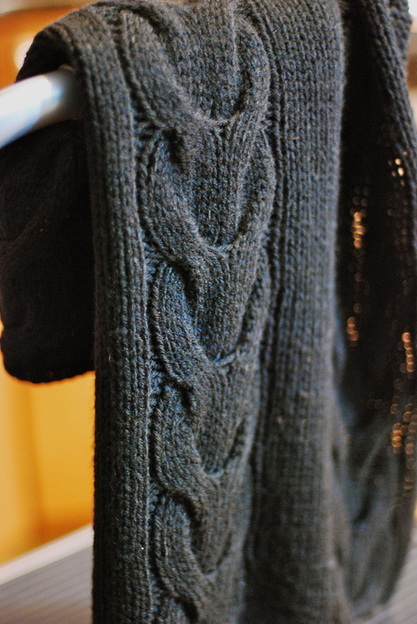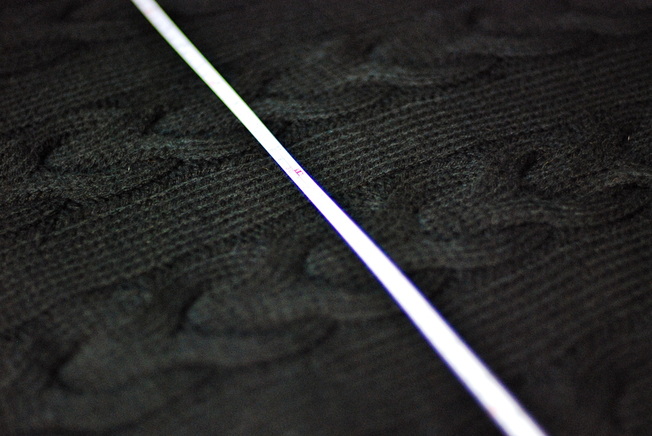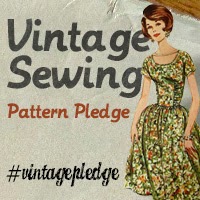|
I've never been a fan of acrylic yarn, but is that any reason to kill it? What has it done to deserve an untimely ending? Though, death certainly does become thee, acrylic. For as stiff, curly and revolting as you are, generally; you're drapey, soft and cooperative once you've been killed... Allow me to explain. With the prospect of moving dominating my thought processes, I'm spending increasingly more time on Pinterest fake decorating my new space. It's a welcome distraction. Among the long list of things I've pinned, I really enjoy the idea of adding a knitted "SOMETHING" to each room, and I've been searching for ways, beyond blankets, to incorporate knitted textures into our decor. I pinned these floor cushions the instant I saw them and started thinking about the best way to approach the project. I foresaw two primary obstacles: 1. Fabric Stretching & 2. The Dogs. In addressing the latter, everything in my house needs to be washable in order to combat pet hair. This majorly limited my yarn options but didn't deter me. The first obstacle was a little bit trickier. I absolutely didn't want to spend hours knitting a fitted cover that would eventually become too large for the cushion it housed and look sloppy. No bueno. By complete chance, I was at knit night and overheard a conversation about killing acrylic. Like me, most of the knitters engaged in the conversation shuddered at the thought of knitting with acrylic. But, the leader on the topic started to say some things that caught my attention. Once you kill acrylic, it behaves like a woven fabric and doesn't have elasticity. Once you kill acrylic the fabric is very flexible and soft to the touch. Once you kill acrylic, it will hold its form and can never unravel. I decided killed acrylic is the perfect medium for my new floor cushions. I grabbed a few super-skeins from Joann and let the killing begin. Basically, killing acrylic is steam-blocking using very high temperature and lots of steam. I'm told that, alternatively, you can press over the top of a wet cloth, but I was too nervous to take that route on my first try. Once the acrylic is exposed to high temperatures, the fibers start to melt and fuse together. It's VERY important to swatch so you know exactly how large your finished piece will measure. Once you've killed the acrylic and stretched your fabric, there's no turning back. It will have ZERO rebound. Using a tape measure and some pins, I anchored my square to a towel over my ironing board. Once my piece was in position, I steamed the snot out of it. That's all there is to it. It's surprisingly simple and very effective. If you plan to kill some acrylic, there are a couple things to keep in mind. Most IMPORTANTly, don't allow your iron to come in contact with your knitting. You'll have a sticky icky mess and you'll be in need of a new iron if you do. Acrylic is a plastic. The melting that occurs during killing is what creates the benefit of the process; however, you can over-kill your fabric. If it starts to get shiny, you've crossed the line. The best way to avoid this is to practice on a swatch. I hate swatching as much as the next knitter, but it's a critical step in this procedure!!!
Have you killed acrylic? Did you do it on purpose?Do share in the comments. I'm not willing to admit that I like acrylic yarn after trying this, but I will gladly endorse the killing of knitted acrylic projects everywhere. Also, I'm really excited to keep working on my cushions. Also, THANKS!!! everybody who shared their experiences and insight on our gluten experiment! I'm incredibly grateful for the thoughtful comments, shared information and reflections on the process, and it's been fun reading them! We still have tons to learn!
11 Comments
10/8/2013 04:40:59 pm
Love the cushion floors you pinned. I hate knitting with acrylic so I have not had a chance to kill it yet - but I can see that it would be a great medium for home decor.
Reply
10/8/2013 11:11:25 pm
I had no idea you could do that to acrylic. I have learned something new today! :-)
Reply
10/9/2013 08:23:48 am
My first experience was with a simple scarf that Sally Mellville had in her Knit book; the fancy (expensive at the time) froo froo novelty stuff (mostly acrylic) turned quite lovely after it got a HOT bath and a toss in the dryer. (I think it was a version of 'killing') LOVE your cushions!!!!! Really like the cable pattern.....might think about that on an afghan. hmmmmmm.
Reply
10/15/2013 12:35:03 am
I've steamed acrylic using the damp washcloth/iron method but I wouldn't say I went all the way to killing it. The final product was soft and drapey, though, so perhaps I just need to freshen my definition. There was one very tiny spot on the blanket where I started to melt the yarn, but luckily, I learned my lesson and the overall blanket was really nice (honorable mention at the Texas State Fair that year - http://www.metzroth.com/katie/wp-content/uploads/2013/04/IMG_68381.jpg). So, I like acrylic for the right project....and your cushions look awesome.
Reply
Leave a Reply. |
Archives
March 2017
|








